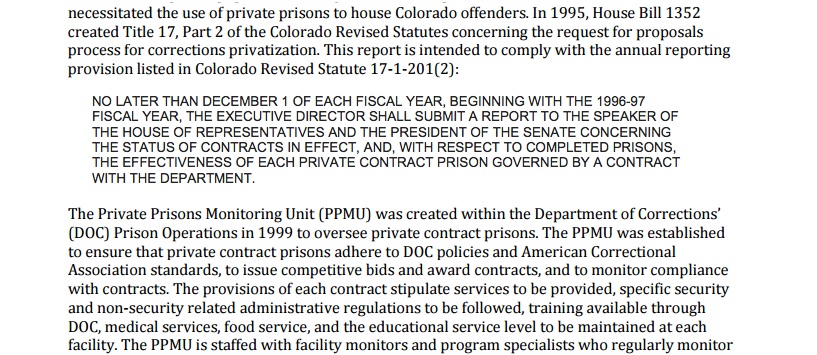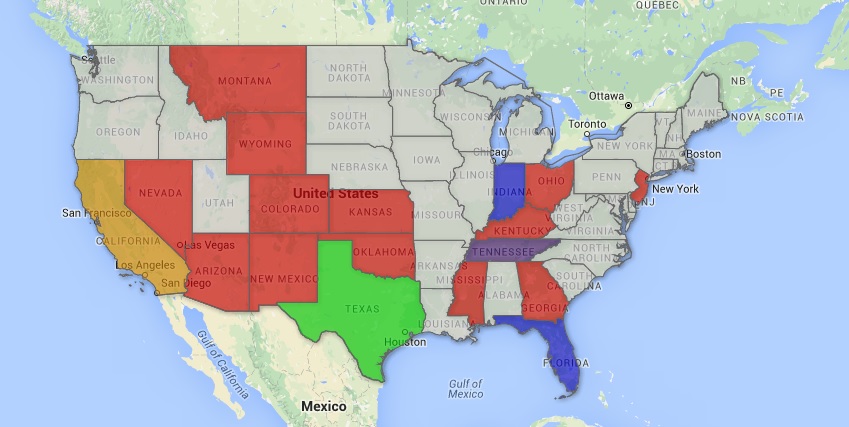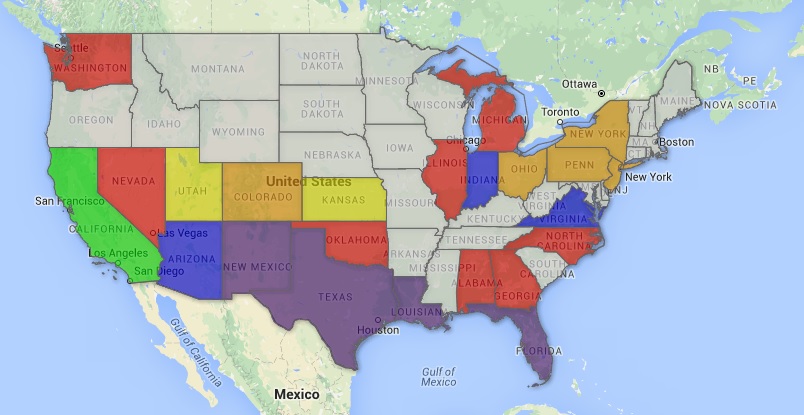This part 4 of a 4-part series on private prison contracts, looking at violations of terms and termination. Parts 1, 2 and 3 can be read here, here, and here.
By the power invested in the Congress by the people, and in Congress’s control over the taxpayer budget, the American people have provided consent to a lot of policies worthy of further consideration - that’s no new news.
In the case of private for-profit prisons, the policy involves turning to an entity incentivized to fill beds with bodies, which is a step over the line for some in terms of how much control a corporation can theoretically have over a human life. Presidential hopeful Bernie Sanders made private prisons an election year talking point when he introduced the Justice is Not For Sale Act into the Senate, which would require local, state, and federal agencies to manage their own facilities. As the definition notes, though, this doesn’t include many of the other growth areas for big companies like GEO and CCA, like halfway homes and mental health facilities.

In the last three pieces, we looked at the basic steps of the need-to-contract paper trail. The slow build development of two companies means that the U.S.A’s top ten prison population list could reasonably contain two Stock Exchange entities - the same two would be contenders on even the global prison systems list. The assumption, generally, is that some appropriate guidelines, standards, have been put into place to keep those companies held to their contract, and if they fail it somehow, there will be consequences.
But in a corporately-regulated industry catering to government dependence, how much those consequences actually reflect the goals of the contract and a consideration for the inmates directly affected is worth scrutinizing.
There are common problems that plague private and public prisons both, but in the case of the former, we’re hiring someone with the expectation that the job benefits from their involvement.
In Colorado, for example, their law established for a monitoring body that is supposed to have a half-a-week presence in each facility.

The latest report found that staffing shortages had occurred at all four of their contracted facilities, and as a result, damages were assessed.

In terms of full-time correctional officers, the fines land somewhere in the range of two to eight equivalent correctional officers. Simply being denied pay for such deficiencies, however, does not really make up for the fact that the needed staff determined to be needed for a facility weren’t there as expected and the sort of effect that that can have on a prison’s internal operations.
Staff shortages and turnover are a not-so-uncommon gripe at public facilities, and the failure of private prisons to consistently and adequately provide for employees may be a consequence of the location of the facilities, as CCA has previously pointed out.
Bent County Correctional Facility, for example, is one of those facilities we’ve previously mentioned operated via an intergovernmental agreement with the local administration. The entire county itself has roughly 6,000 people, and the agreement it and CCA offers the city two dollars for each inmate, a number that began at 700 when the facility opened in the late 1990s and has since doubled to 1400, putting the County’s estimated returns at about $1,000,000 or $166 per person.
Fines for contract violations don’t really address any of the issues that got us there, not least of which is any interesting local incentive in a limited employee pool area. (A similar dynamic showed itself in Jenkins County, Georgia, where at one point the ratio of applicants to jobs was about 20 to 1.)

Staff shortages and other employee problems have been a staple of the correctional landscape, but private prisons’ position as private companies have offered them protections that wouldn’t otherwise be afforded to a public facility in dire straits. The now infamous (and publicly-run) Idaho Correctional Center, which earned itself the horrifying label “The Gladiator School,” became the subject of a 2010 ACLU lawsuit which asserted high turnover, staff shortages, and medical corner cuts.
The settlement that was eventually reached remains sealed, due to U.S. District Judge Edward Lodge’s ruling that the corporate private interest trumped the public’s right to know.
For journalists and the public alike, getting a clear landscape picture of how private prisons have been held accountable runs up against the corporate interest not infrequently - on the federal level, the basic per diem rate per inmate is often not made readily available. And when materials that might shine some light on past and current operations, they’re typically barred by a fee that would certainly set back anyone working on a correctional officer’s salary.
Cost and an apparently as-yet-unestablished opinion on the part of government officials that private prison matters are not necessarily a matter of public interest provide two common barriers to gathering materials. North Fork Correctional Facility, in Sayre, Oklahoma, for example, gathered over 5000 pages of after-action reports and inspections that the California Department of Corrections and Rehabilitation estimates would require $638.40 to provide. North Fork has held prisoners from multiple states.

A contract only sets the terms; it can’t necessarily enforce them or even catch all of them when they occur, and the question of whether the sidestream costs of contract monitors and other accountability measures both ensure contract compliance and don’t themselves offset savings remains definitively unanswered.
In the case of Arizona State Prison - Kingman, regular inspection reports from June 2015, when it was run by Management and Training Corporation, included multiple incidents of dorms closing due to insufficient staffing, despite attempts to fill the vacancies.

The next month, riots shut down the prison and operation was eventually transferred to GEO Group.
Contract terms and monitors, fines and fees, aren’t really enough to convert from the intangibles of the prison environment to surely-status-quo-but-hopefully-better-for-cheaper prison performance. With almost 200 contracts and counting, the two major private prison operators are enjoying an impressive incarceration reign, fueled by government need and greed at various levels, and the American people keep on signing on.

States with contracts with CCA

States with contracts with GEO
- Yellow = leased only
- Blue = facility managed
- Red = facility owned/operated
- Green = facilities owned, managed, and leased
- Purple = facilities both owned/operated and managed
Image via Pixabay




